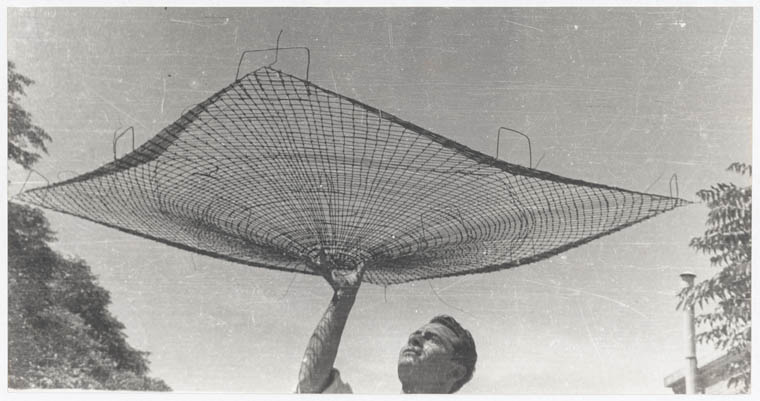Amancio Williams

(1913–1989) Buenos Aires, Argentina
Argentine architect Amancio Williams (1913–1989) initially studied engineering, then worked in aviation, and later completed his architecture degree at the Universidad de Buenos Aires in 1941. Throughout his career, he undertook a wide range of projects—monuments, residential, office, and industrial buildings, as well as interiors, furniture, object design, and large-scale urban developments. His early works included Viviendas en el espacio (1942), Estudio para viviendas en Casa Amarilla (1942–43), Sala para el espectáculo plástico y el sonido en el espacio (1942–53), Una nueva bóveda cáscara (1951–52), and the celebrated Casa sobre el arroyo in Mar del Plata (1943–45). In 1949, Williams collaborated with Le Corbusier on Casa Curutchet in La Plata and also submitted government proposals, including an international airport and hospitals for Corrientes Province. His career combined realized works with structural innovations and visionary urban schemes such as La ciudad que necesita la humanidad (1952–73) and was recognized through invitations to exhibit internationally. Williams was named an honorary member of the American Institute of Architects (1962) and Argentina’s Academia Nacional de Bellas Artes (1982).
The Amancio Williams fonds are in the collection at the Canadian Centre for Architecture, a gift of the children of Amancio Williams, documents the architect’s career from the 1940s to the 1980s, encompassing more than 80 projects, writings, exhibitions, and professional activities through drawings, models, photographs, correspondence, and archival records.
2025 Biennial Project
Project Overview
Fragments of an Archive
Amancio Williams (Argentina, 1913-1989) was a pioneering architect whose work consistently explored the intersection of social purpose, technical innovation, and environmental sensitivity. Across his career, Williams pursued designs that sought to improve human experience while addressing broader ecological and urban concerns. The selected projects for this exhibition—Viviendas en el espacio (Housing in Space, 1942), Solo para el espectáculo plástico y el sonido en el espacio (Hall for Plastic Spectacle and Sound in Space, 1942), La ciudad que necesita la humanidad (The City that Humanity Needs, 1974–89), and La primera ciudad en la Antártida (The First City in Antarctica, 1980–83)—span his career and reveal his persistent interest in harmonizing human life with built form and environment. From experimental housing and public structures to visionary urban and polar settlements, these works share a focus on spatial innovation, structural experimentation, and adaptability to both human and environmental needs.
Venue
View moreGraham Foundation
Address
4 W. Burton Pl., Chicago, IL 60610
Neighborhood
Gold Coast
Description
Founded in 1956, the Graham Foundation for Advanced Studies in the Fine Arts fosters the development and exchange of diverse and challenging ideas about architecture and its role in the arts, culture, and society. The Graham realizes this vision through making project-based grants to individuals and organizations and producing exhibitions, events, and publications.

